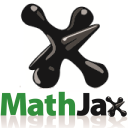Have you ever attended a conference focused on preparing for careers in the mathematical sciences? Have you ever considered organizing such a conference? A group of friends and I co-organized such a conference recently, and I’m writing to share some reflections.
First, background on the conference itself. On February 9, 2013 HMC hosted the first annual AfterMath Conference: Preparing for Careers in the Mathematical Sciences. This conference was co-organized by Alissa Crans, Talithia Williams, Robin Wilson and myself. Our goals included (1) working to broaden participation in mathematics by engaging a diverse cohort of students from Southern California, (2) encouraging applications to graduate school from local undergraduate students and (3) providing information and resources surrounding mathematically oriented careers outside of academics. The conference homepage is here: http://www.math.hmc.edu/AfterMath/.
The AfterMath Conference took place on a single Saturday, and included a keynote talk, two panels and two workshops. The keynote address was given by Phil Kutzko (co-Director of the National Alliance for Doctoral Studies in the Mathematical Sciences–http://www.mathalliance.org/), who spoke about the cultural history of mathematics and how it has shaped the discipline and its practitioners.
The structure of each panel was simple: panelists introduced themselves and provided important background information. Then the floor opened up for discussion, and the audience and panel engaged in questions and answers and discussion for the duration.
The first panel centered on Graduate School, and panelists included America Chambers, Alberto Soto, and Karen Wood of UC Irvine, Jackie Lang of UCLA and Syvillia Averett of Central State University. The panelists ranged from earlier graduate students to new Professors, and were able to answer audience questions ranging from qualifying exam tips, to choosing an advisor, to finding a peer group.
The second panel focused on Industrial Mathematics, with panelists Gary Green of Aerospace Corporation, Enrique Schultz of Mercer and Susan Martonosi in Operations Research at Harvey Mudd College. Discussions ranged from networking advice, to specific sub-disciplines worthy of focus for industrial applications, to general career advice, to degree requirements in various industries.
In addition, two workshops allowed for active participation among conference attendees. First, students brainstormed their graduate school Statements of Purpose and wrote rough drafts and outlines. The collective results of this graduate school application workshop are collected at http://bit.ly/GradEssayTips. (Thanks to Rachel Levy for running this workshop and preparing the Grad Essay Tips!) Next, students engaged in a workshop on choosing the right PhD program, complete with an application timeline and checklist.
Finally, the day ended with a graduate school fair, with schools (and representatives) including USC (Francis Bonahon), University of Arizona (Tom Kennedy), UC Riverside (Julie Bergner) and University of Iowa (Colleen Mitchell).
We conducted follow up evaluations with students; here are a few reflections on the conference and its evaluations.
(1) With a modest budget (generously provided by the National Alliance, with local support from the HMC Department of Mathematics), we were able to attract over 100 students from greater Los Angeles, on a Saturday. Students came from as far north as UC Santa Cruz, as far south as Biola University, as far west as Loyola Marymount University
and as far east as Cal State San Bernardino. Aside from the content of the conference, their only reward was a free lunch. In particular, students drove themselves without compensation.
(2) There is a thirst for career advice in mathematics, both in and out of academics. This was made clear time and again throughout the conference and in evaluations.
(3) There is a strong desire from many PhD programs in mathematics to connect with a diverse group of undergraduate students. (And many such programs are willing to fund the travel of representatives for recruitment purposes.)
(4) Many students left before the last afternoon session was over. To encourage students to give up their entire Saturday, and stay for the duration of the conference, additional incentives are required. (For instance, I know of other conferences that feature raffles and so forth towards the end of the day.) Next time, I’ll try to find funding to give away an iPad or something.
(5) Hosting a regional mathematics conference builds community, and is a way to gather like-minded faculty, students and industrial mathematicians who may be from disparate institutions, but from the same geographic region.
The National Alliance hosts a big annual Field of Dreams conference. However there are many mathematically talented students who haven’t yet had the opportunity to attend FoD (or don’t know about it, or have yet to realize that math is an option). Regional alliances and conferences are additional tools to support students (and professors!) in mathematics. I hope this model (for a regional Alliance conference) will be easily replicable at other institutions.
Students, please consider attending the 2013 Field of Dreams conference, the SACNAS National Conference, or any other mentorship related conference. (SACNAS is a magical and important organization, and will be the subject of many future posts.) Faculty, let’s organize more regional conferences centered on mentoring future mathematicians, for the benefit of us all!


Great post about the conference that you recently attended!